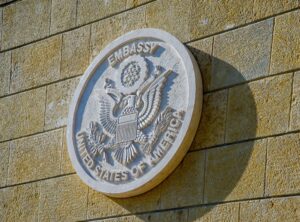The City of Westminster is to offer a greater number and variety of electric vehicle (EV) charging points available to drivers in the borough from early 2017.
Charging points will be upgraded and up to 20 new outlets will be installedThe council announced yesterday (30 November) that from January 2017, charging points will be upgraded and up to 20 new outlets will be installed, including some rapid chargers.
The smart grid technology company BPL, under the Source London network, is putting in place a new model for electric charging, while Chargemaster is rolling out public charging network ‘Polar’.
PodPoint will be upgrading the equipment and the council will be working with new operators to increase provision for EV users across the borough. A new range of tariffs tailored for different users of different types of EV technology is being introduced by the operators.
Westminster city council was the first local authority in the UK to launch on-street charging points for electric vehicles. It now has over 60 on-street charging points, with an additional 200 available off-street.
The council claims that the expansion of the EV network will also help its Marylebone Low Emission Neighbourhood and other air quality hotspots in the borough by reducing the emission of harmful pollutants.
Cllr Heather Acton, Cabinet Member for Sustainability and Parking, said: “Poor air quality is a continuing problem for us in Westminster, but we’re doing all we can to help improve our environment through our Greener City Action Plan. This includes encouraging a switch away from diesel vehicles, with easy parking for electric vehicles and improving electric vehicle infrastructure, encouraging car club use as an alternative to a private car, reducing freight and waste vehicle movement, promoting more cycling and walking, eliminating vehicle engine idling and reducing emissions from buildings.”
Cllr Acton also explained that the authority is also trialling new measures within its Marylebone Low Emission Neighbourhood which “will help make real improvements to air quality in central London.” And, she added: “Electric vehicles can help by cutting reliance on more polluting cars. The expansion of the EV network offers an improved service for those who need a vehicle.”
Trees
As part of National Tree Week, Westminster city council also announced the start of its annual street tree-planting programme.
The iconic London plane tree is still planted along with a wider range of tree speciesFrom the end of this year to March 2017, the council will be planting 150 new trees throughout the borough. Westminster council currently manages 15,000 trees in the borough, including 9,000 street trees, and is committed to adding an extra 1,000 by 2020.
The iconic London plane tree is still planted where appropriate, along with a wider range of tree species which help make the overall population of trees better able to cope with pests and diseases.
Westminster has also applied for further funding from the Greater London Authority’s tree fund to plant an extra 40 street trees over the next 4 months within its Marylebone Low Emission Neighbourhood. The Westminster Tree Trust is also looking at match-funding new trees in the area.
Cllr Acton said: “Trees are key here and we are committed to planting more trees and creating more green spaces. Â As part of this, we shall be consulting on our open space and biodiversity strategy – to make the city green and help it to thrive.”
Last year, a University of Leicester study found that trees significantly reduced concentrations of road traffic emissions in the city (see AirQualityNews.com story).













Leave a Reply